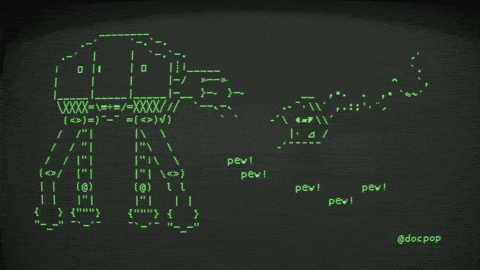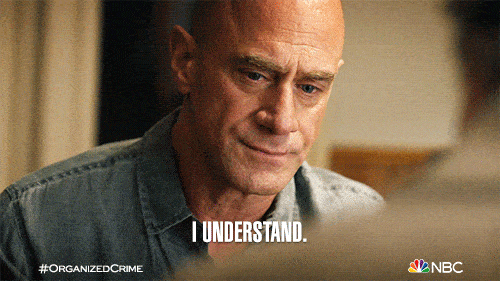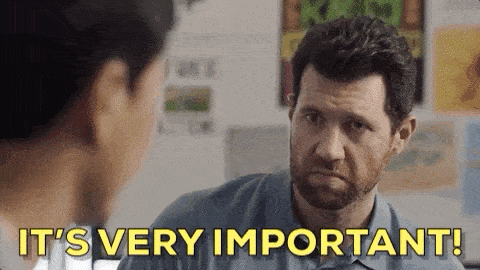The banner is to inform the visitors of an important message.
Solutions

When we're surfing the web, it's easy to take a well-designed website's visual appeal and seamless navigation for granted. But what's the magic behind this user-friendly experience? What is UI in web design?
UI is the bridge between users and the digital world. It's the combination of visual elements - buttons, icons, spacing, typography, and colour schemes - that help us interact with a website or app. It's not just about making a site look pretty. It's about creating a simple, intuitive, and enjoyable user experience.
Understanding UI is essential for any business looking to create a powerful online presence. It's the key to ensuring your website isn’t just visually appealing, but also user-friendly and effective in achieving your business goals.

When we dive deeper into the realm of web design, the term UI, or User Interface, constantly pops up. UI is the pivotal component of any digital interaction. It comprises the visual elements - buttons, menus, icons, interaction points - that we use to control a software application or a website. It's the bridge between the user and the software.
At the heart of UI is the user's experience. A well-designed UI anticipates what users might need to do and ensures that the interface has elements easy to access, understand, and use to facilitate those actions.
We aren't merely producing a set of aesthetic controls and patterns; we're also creating an interactive experience.
Let's look at some key characteristics of an excellent UI:
These points underline why we lay such strong emphasis on understanding and improving UI in web design.

Whilst technical features are indispensable in creating a robust website, the user interface (UI) dramatically impacts how users perceive and interact with your site. UI is not merely an aesthetic consideration; it represents the site's usability baseline and directly affects the user's overall experience.
User expectations have grown with increasing digitalisation. On-screen experiences now need to be seamless, intuitive, and engaging to keep users returning. An excellent UI can significantly increase a site's market retention rate, defined as the proportion of total visitors who return to the site after an initial visit. A website with good UI often experiences a higher market retention rate compared to sites with poor UI designs.
In discussing the importance of UI, we should consider why we prioritise it in web design process. Firstly, it creates an inviting, customer-oriented environment, encouraging interaction with your site and enhancing user satisfaction.
Secondly, a well-structured UI helps users accomplish their purposes more efficiently, thereby reducing the chance of site abandonment. Finally, an excellent UI can build trust and foster loyalty, two critical factors in today's competitive digital landscape.
Let's unpack the fundamental characteristics of an outstanding UI: clarity, familiarity, consistency, feedback, and recovery. Each of these elements contributes in a unique way to the effectiveness and user-friendliness of a website, ultimately offering unparalleled user experiences.

Let's dive deeper into the fabric of UI - its principal elements. Understanding these elements will enable us to design a user interface that's not just aesthetically pleasing, but also functional and efficient.
First, we have input controls. These are the elements that allow users to input information into the system. Text fields, checkboxes, radio buttons, dropdown lists, and action buttons like "submit" or "cancel" are some common examples.
Secondly, we need to pay attention to navigational components. These usually include icons, sliders, search fields, pagination, tags, and breadcrumbs that guide users through the site or application. Navigational components ensure users don't get lost in cyberspace!
The third critical element is informational components. Tooltips, notifications, progress bars, message boxes, and pop-up windows fall in this category. These components are vital in providing feedback and crucial information to users.
Lastly, we have containers. As the term suggests, containers hold related content together. They help organise and segregate information, making it easier for users to absorb and understand.
In the grand scheme of things, we also need to ensure consistency in the use of these elements. Consistency makes UI predictable, minimising the learning curve for users. It's not just about the colour scheme or typography; consistency should engulf everything – element sizes, button shapes, icon designs.
While we have spoken about these key elements, it’s essential to remember that effective UI design requires more than slapping together these components. It's about creating an environment where users feel comfortable and confident. Keep following the article as we delve deeper into building a user-friendly UI.

Let's delve into how UI plays a crucial role in crafting a user-friendly experience. It's right at the heart of every interaction on a website. A well-executed UI can turn a mundane task into an enjoyable process. In turn, this fosters a positive emotional connection between the user and the platform.
Have you ever visited a website and struggled to find the information you were looking for? Or perhaps you've been frustrated when a website wouldn't load properly on your mobile device? These are examples of poor UI, instances where the interface falls short, hindering the user's experience.
Conversely, a site with a stellar UI intuitively guides users to their destination, like a well-planned city with clear signage and straightforward directions. This not only makes the experience user-friendly but it also ensures that users can accomplish their jobs efficiently, increasing the likeability of the platform.
Think of input controls, like buttons, text fields, and checkboxes. They often serve as the first point of interaction between the user and the site. Therefore, they play an essential role in shaping the user's experience.
With these elements, clarity and recognisability are key. They should be easy to identify and understand. The methods employed for interaction should also be familiar, ensuring a smooth transaction for users.
Similarly, navigational and informational components, including breadcrumbs, sliders, notifications, and message boxes, need to be consistent and predictable across the site. Information should be presented in an easy-to-digest format. Likewise, containers, like accordions and carousels, should provide structure, allowing users to navigate the site with little effort.
Enhanced UI design requires strategic placement of components, optimisation for different screen sizes, and keen attention to visual hierarchy. By perfecting these elements, we're creating a platform that isn't just beautiful, but functional too. This functionality strikes the balance between appealing aesthetics and usability, be it on a blog, e-commerce site or social media platform.
Remember, UI is not a mere decorative aspect. It's an instrumental part of any digital platform that directly impacts a user's overall experience; it can make or break a website. As we continue navigating through the indispensable elements of UI design, we visualise the role of UI in strengthening user relationships, building loyalty, and enhancing the overall user experience.

Peeking behind the User Interface, we find there's more to UI than meets the eye. It's not just about making a platform aesthetically pleasing, but it's also about enhancing the overall user experience. We can't overstate the influence of effective UI on the satisfaction of users and their perception of a platform.
First and foremost, UI taps into the user's emotions. How so? By transforming otherwise mundane tasks into enjoyable experiences. A well-crafted UI stimulates a positive emotional response, hence fostering loyalty and creating lasting bonds between the user and the platform.
Strengthening this bond isn't an easy feat though. Simply sticking UI components together won't work. It requires deliberate and strategic placement of these elements. Beyond that, each element's clarity, recognisability, and familiarity need vast consideration.
Take input controls for example. They are vital because they enable users' interaction with the platform. Therefore, they should be clear, intuitive, and familiar to users for effortless navigation and interaction.
Speaking of interaction, consistency and predictability are two key aspects contributing to a seamless navigational journey. The way we employ navigational components plays a pivotal role in getting users where they want to go on the platform.
Similarly, informational components cater to the users' desire for knowledge, making consistency between them imperative.
Creativity within the bounds of consistency is the name of the game in optimal UI design. When these components are predictably placed, they give users a sense of control, familiarity, and reliance on the platform.

Meeting the variegated needs of users is another aspect of UI's multifaceted role. The growing trend of mobile usage has ushered in new UI challenges, primarily optimising for different screen sizes. Responsiveness can no longer be a side note, it's become a forefront consideration in UI design.
Each pixel matters and the visual hierarchy mustn't be undermined. Structures, colours, patterns, and whitespace — all these factors influence the effectiveness of the UI across different devices, but more crucially, in adopting, retaining, and deeply satisfying users.
We've delved into the world of UI in web design, understanding its far-reaching influence beyond mere aesthetics. It's clear that a well-crafted UI can evoke emotions, turning tedious tasks into delightful experiences, and fostering loyalty between users and platforms. Strategic placement of UI elements, clarity, and familiarity in input controls are all crucial. Consistency and predictability are key to a smooth navigational journey.
We've also seen how tailoring UI for different screen sizes caters to diverse user needs. Lastly, we've highlighted the power of visual hierarchy and the role of structures, colours, patterns, and whitespace. It's evident that these factors significantly impact the UI's effectiveness in attracting, retaining, and satisfying users. Remember, a great UI is more than just a pretty face; it's the heart of a successful web design.